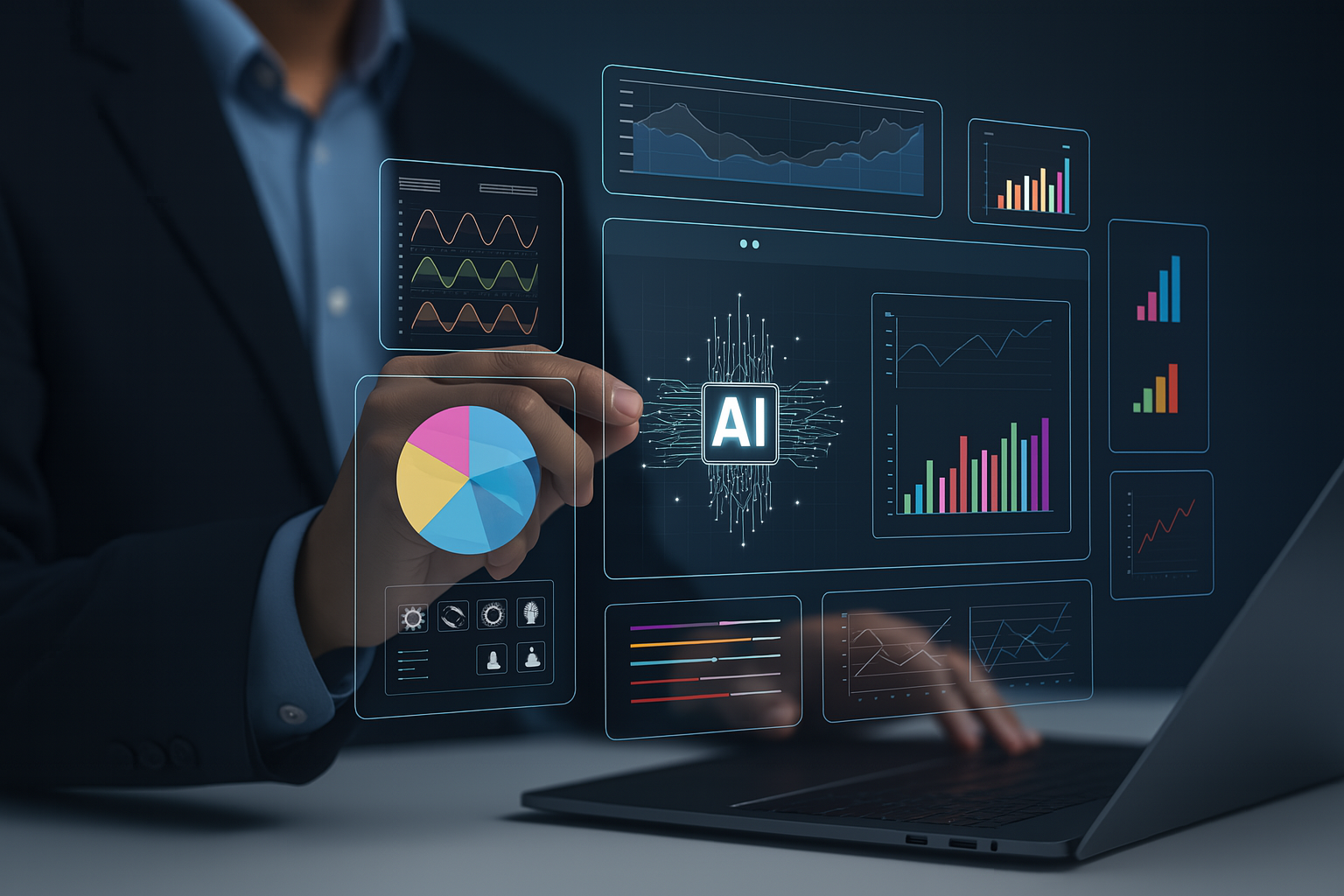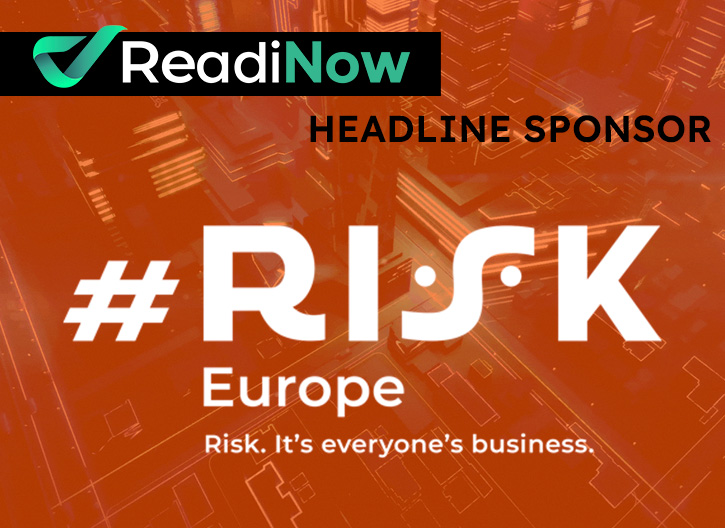The rapid pace of technology change organizations face today is overwhelming. However, disruption is the key to staying ahead of your competition. It is imperative to see disruptive technology as a strategic investment for your organization, rather than an obstacle. Integrated GRC technology will allow you to stay ahead of your competition in the era of digital disruption and ensure you stay compliant.
Adopting new technology can be challenging. It often involves changing the status quo of your business operations. Yet it is crucial to understand that disruption, particularly self-disruption, is a major driving force for organizational growth. Disruption is about changing the present in order to be able to seize an opportunity in the future.
It is easy to be complacent when your organization is prospering. However, organizations that want to deliver sustainable growth must have a long-term vision and strategy that takes into account the perpetually evolving environment your business operates in as well as its competitors. This is how to become a pioneer in your industry like Google, Amazon and Uber.
Self-Disruption
According to Fortune Magazine’s Geoff Colvin, many Fortune 500 CEOs state their single biggest challenge is the rapid pace of technology change. Your organization has a choice: to become a leader or to follow. To become a leader, you must continually disrupt from within. Competitive advantage comes from harnessing technology change that your competitors do not have and integrating it into your operations innovatively.
Of course, perpetual self-disruption is easier said than done. For example, large enterprises often have a difficult time keeping pace with technology change because of resource allocation. Their enterprise architecture inadvertently nourishes a competition for resources, as every department attempts to keep pace with technology changes relevant to them. This often has negative implications for your organization’s self-disruption. Trying to give every technological opportunity that arises for your organization enough resources to utilize its full potential is impossible and inefficient.
Effective self-disruption that generates ROI must be the priority. Start-ups often excel at executing on disruption simply because they have a clear vision. When Uber first started, their vision wasn’t to compete with taxis, they wanted to revolutionize the entire taxi industry it and so they did. This left competitors scrambling to keep up in their wake.
Large enterprises are often seen as too complex to shift their business strategies in ways that lean start-ups can. However, a vision and the ability to execute on that vision can make it possible. Therefore, it is imperative that your organization’s architecture has the capability and streamlined decision-making ability to understand what technological disruption will generate the greatest ROI financially and socially. A good starting point in looking for this is to see if your organization knows where they are going and who they are taking with them. Understanding your product, competition, target audience and their behaviours are essential in understanding how you should use technology to disrupt the status quo.
A comprehensive and realistic understanding of your current market position allows you to gauge what you want from the future. This comes from understanding your target audience’s trends and engagement with your brand and products as well as your competition. However, to do this requires accessible data and effective analysis tools that empower you to understand your organization internally and externally. Being able to recognize your opportunities and how to action on them are the two keys to harnessing digital disruption and data plays the primary role in both.
The Cloud
A major component of the digital disruption era has been the mass adoption and integration of the cloud by organizations. Cloud services are allowing organizations to store their data with safety and security while keeping it highly accessible.
When organizational data is stored in the cloud, organizations can often analyze and make use of it more effectively. However, if data aggregation and application sounds daunting, it’s okay, because that is where Intelligent SaaS providers come into play.
Leading Software as a Service (SaaS) providers are allowing organizations to not only transition their data online but to harness it and analyze it in ways that provide a competitive edge. There are many functions these companies can provide your organization. However, one of the most important areas in the digital era of disruption is in Governance, Regulation and Compliance (GRC).
Collaborative GRC And Disruption
Enterprise architecture’s that have integrated SaaS into their business operations are often at the forefront of their industry. Intelligent GRC software has the ability to enable self-disruption while having the scaling capabilities to remain relevant as the organization expands.
Governance
Fully-integrated SaaS can provide your organization with collaborative governance while still ensuring that key stakeholders remain in control. Allowing everyone to have real-time access to workflow processes and critical information across multiple platforms means that directions and instructions can be executed cooperatively, effectively and systematically. Having relevant stakeholders on the same page reduces human error, and provides guidance for everyone’s roles and responsibilities from on-site employees up to the CEO. This ensures that your corporate governance strategy can be adhered to at all levels of your organization.
Self-disruption by adopting new technologies can be approached systematically and efficiently when collaborative governance is applied. This results in smoother operational transitions and faster adoption rates of new technology by employees.
Risk Management
The collaborative function that cloud-based GRC software can enable for organizational governance also applies to risk management. Having every stakeholder actively engaged in all stages of a crisis, from identification to recovery, is critical in an organisation’s technological evolution. Making self-disruption as least detrimental to organizational operations as possible is paramount. It enables employees to become more accustomed to change and results in smoother transition periods, which is often a major problem for large enterprises.
It is important to keep in mind that new technologies bring new risks. Having intelligent GRC software that empowers all stakeholders to easily identify and flag new and potential risk means your organization’s risk appetite can grow in real-time. Enabling everyone to be a crisis officer reduces the potential for self-disruption to negatively affect your organization. Essentially, it results in a practical fail-safe to ensure that you never bite off more than you can chew.
Compliance
Embracing new technology can result in your organization being a pioneer in your industry. While this is what you should want, it is imperative to understand what this means in terms of compliance. Self-disruption is about evolving your company, it's about innovation. However, this advancement into the somewhat unknown can lead to grey areas within the law and organizational practice.
Operating within boundaries sounds counter-intuitive to self-disruption. However, it is essential to your organization’s legal financial and social responsibilities. While self-disruption often takes organizations to the extreme, it is essential that there are clear operational guidelines that allow every stakeholder to understand the boundaries that the law and the organization itself have in place. However, this does not mean you cannot think and execute on ideas from outside the box. Intelligent GRC software can allow for your organization’s innovation to always be compliant with laws and your organizational values. This means that you spend more time focusing on accomplishing your vision and less time worrying about compliance issues.
Implementing clear boundaries that can be updated in real-time enables your organization to continue to pioneer in your industry while still operating within legal boundaries. Again, collaborative solutions empower all stakeholders to understand the current legal frameworks in place and where disruptive technologies will take the organization within that framework. The end result is that your entire organization can innovate with confidence.
Collaborative GRC means self-disruption is perpetual, yet sustainable. Empowering all relevant stakeholders in your GRC strategy ensures that your organization operates within legal boundaries while still championing your social corporate responsibility.
In this era of digital disruption, it is imperative to keep in mind that opportunities do not appear out of thin air, they are created by ideas, dreams and data.


.jpeg)











